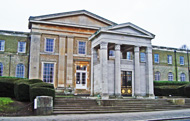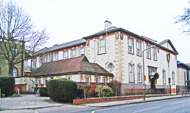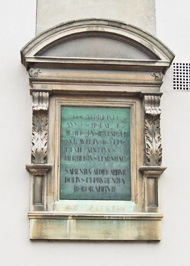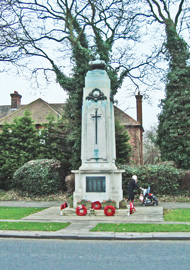Mill Hill Emergency Hospital
The Ridgeway, Mill Hill, NW7 1QS
Medical dates:
Medical character:
Psychiatric
In 1939 Mill Hill School was evacuated en masse to St Bees in Cumberland for the duration of WW2 and the vacated buildings, set in 120 acres, were requisitioned by the Emergency Medical Service for use by the Maudsley Hospital, many of whose staff and services were relocated there.
The Mill Hill Emergency Hospital opened in August 1939. Under the control of the Mental Hospitals Department of the LCC, it treated mainly soldiers and civilians suffering from neuroses and shell-shock. Women patients (usually air-raid casualties but also those in the services) were accommodated in one of the out-lying villas.
The clinical work focused mainly on treatment of the emotional traumas of war. Patients were hypnotized to help them overcome severe anxiety, or were given narcosis or semi-narcosis treatment with sodium amytal injections to help them relive their experiences (although this was only effective if given soon after the trauma). A 150-bedded unit was established for patients with 'effort syndrome' (see below). Psychotherapy was also used. Individual psychotherapy was impractical because of staff shortages and a large workload, so group psychotherapy was introduced, with the patients and staff working together as a team (notions central to the therapeutic community ideology developed at the Hospital by Dr Maxwell Jones).The Hospital produced many other innovations in psychiatric treatment and research during the war. It was one of the first in Britain to introduce electroconvulsive therapy (ECT), which would eventually replace cardiazol-induced seizures. The psychologist John Carlyle Raven, a conscientious objector, developed a verbal intelligence test, still called the Mill Hill Vocabulary Scale today. Preliminary research at Mill Hill using mental tests on patients with senile dementia helped in the development of the specialty of old age psychiatry. In 1942 the eminent German-born psychologist Hans Eysenck (1916-1997), who had fled from Nazi persecution, was appointed as Senior Research Officer. His first research involved 700 neurotic soldiers.
The Clinical Director allowed ECT, but not lobotomies or insulin therapy, although these were permitted at Sutton, where the other part of the Maudsley Hospital had been evacuated (this later caused tensions when the two branches were reunited at Denmark Hill after the war). In fact, at Mill Hill, there were tensions between the Clinical Director, Dr Aubrey Lewis (1900-1975), and the Medical Superintendent, Dr Walter Maclay (1901-1964) (who was later highly instrumental in developing the Mental Health Act, 1959, which laid the legal foundations for providing community care), as well as between the military and civilian management of the Hospital and among various staff members.
The Hospital, with 550 beds, closed in 1946 when services returned to Denmark Hill.
Present status (January 2009)
The site is once again the Mill Hill School.

Mill Hill School, as seen from The Ridgeway.


The School House, the main school building, built in 1825 (left). The white stone memorial arch in front of the entrance to the School bears the names of the pupils who died in two world wars.


The Marnham building to the north of the main building.

The plaque on the front elevation of the Marnham block.


The most northern school building (left) is by the municipal War Memorial (right).

The Grade II-listed Mill Hill War Memorial, unveiled in 1920.


The theatre, chapel and other school buildings (left). The School, as seen from the west (right).
Effort syndrome
Previously known as 'soldier's heart', the term effort syndrome
was coined by Sir Thomas Lewis (1881-1945) to emphasize the lack of cardiac
pathology. The clinical manifestations of the syndrome were
breathlessness, pain in the chest and general exhaustion when the
patient was asked to exert himself.
Effort syndrome could affect ordinary servicemen not only suffering from the stress of battle, but those who had broken down with the stress of being in the army, or being away from home, or worried about the danger to come.
Effort syndrome could affect ordinary servicemen not only suffering from the stress of battle, but those who had broken down with the stress of being in the army, or being away from home, or worried about the danger to come.
References
Lewis T 1918 The Soldier's Heart and the Effort Syndrome. London, Shaw.
Wooley CF 1976 Where are the diseases of yesteryear? Circulation 53, 749-751.
Lewis T 1918 The Soldier's Heart and the Effort Syndrome. London, Shaw.
Wooley CF 1976 Where are the diseases of yesteryear? Circulation 53, 749-751.
Hilton C 2006 Mill Hill Emergency Hospital: 1939-1945. Psychiatric Bulletin 30, 106-108.
http://wapedia.mobi
www.barnetwalks.co.uk
www.studymore.org.uk
Return to home page